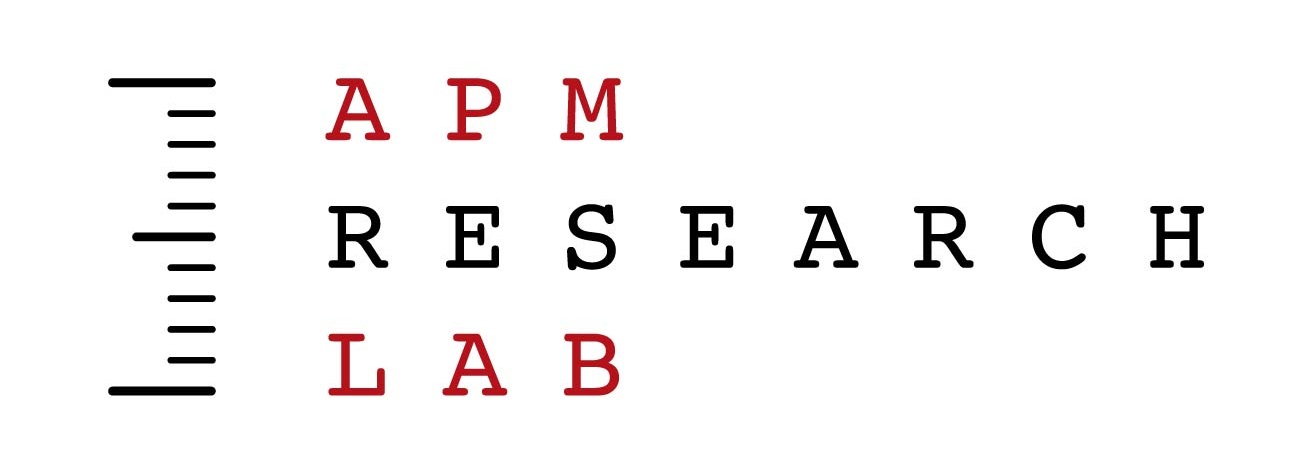Study finds conservatives and liberals want similar things from public media
Photo by Will Francis via Unsplash
RELATED
Researching Unmet Needs: executive summary & guidance on using the RUN dashboard
Poll: American institutions? 1 in 5 say "let them burn"
Southern California Public Radio Diversity Report, 2023 (LAist)
MPR News source diversity report, February 2021 - April 2022
Minnesota's Diverse Communities: News consumption and trust in the media
Editor’s note: This article was originally published April 3, 2025 on Current.org, and is reprinted here with permission.
by CRAIG HELMSTETTER | April 8, 2025
A recent congressional hearing on public media demonstrated that House Republicans and Democrats — at least those who voiced their opinions — are diametrically opposed in their support for continued federal funding of public media.
A Pew Research Center survey released the same day showed that the American people aren’t as sharply divided over this question. Overall, a 43% plurality favors continued federal funding, including 69% of Democrats but only 19% of Republicans.
Amid these apparent divisions, it may seem that conservatives and liberals alike have become so sealed off in their ideological and cultural echo chambers that they are searching for completely different offerings from news and cultural programming.
A major new study shows that is not at all the case.
Researching Unmet Needs, commissioned last year by the Station Resource Group, Public Media Content Collective and Greater Public was conceived well before the 2024 election. It was not conducted to arm public media advocates with field-tested talking points on how to best make the case for supporting public media in today’s partisan atmosphere. Instead, its goal was to help public radio meet its mission of serving all Americans.
The study, conducted by City Square Associates, includes a national survey of 10,000 adults who represent all Americans. Many respondents had no relationship with public radio. The survey was not limited to public media listeners, donors or fans.
Identifying unmet needs
The basic formula of the RUN study was to ask people about their interest in specific topics and the importance they assign to different characteristics of news and information. Then, for topics that people said were either interesting or important, they were asked about the availability of information that met those attributes.
If someone is both interested in a topic and feels that it is not readily available to them, that constitutes an “unmet need.” If a particular unmet need is common among a given group of people, that signals high demand — and an opportunity to better serve that group’s needs.
In one key finding, the study identified “a trust vacuum and a certain skepticism of authority.” When survey respondents were presented with a list of 17 “news characteristics,” the top two unmet needs they identified were “It’s something I can trust” and “It’s carefully researched.” These were also the top two unmet news needs for self-identified liberals and conservatives alike.
There was less consensus among Americans in general about unmet needs among the 20 general media topics and 17 specific news topics listed on the survey. However, some similar topics rose to the top for liberals and conservatives.
Audiences at both ends of the political spectrum say they are looking for programming related to history and local news.
Among liberals there is a higher unmet need for programming covering nature, art, climate and social justice, whereas among conservatives demand is slightly higher for comedy, religion, immigration and public safety.
But even these differences are not that large: 14% of liberals are also looking for comedy and 8% of conservatives are looking for coverage of nature and the environment.
Music unites us
RUN was commissioned by and for public radio, so the survey also included questions aimed at understanding music needs.
It turns out that music appreciation is even more bipartisan than news. For liberals to conservatives alike, the most popular genre is classic rock. The most common unmet need for music programming across the board was “live concerts or shows.” Music calendars and festivals were a close second and third for all.
The platforms they are a-changin’
While the RUN study points toward needs for news and music programming that seem to cross partisan boundaries, it also reinforces a different type of bifurcation. As shown in many other studies, traditional public media platforms — radio and television — are no longer the only or even primary places to meet audiences.
According to the study, television remains the single largest news source, with 53% saying they are likely to use TV “to get the news and other current events information that they are most interested in.”
However, a variety of other platforms are not far behind. Forty-five percent say they use documentaries. A range of digital outlets — including YouTube, websites, social media, and mobile apps — are each relied on by about 40% of adults. This compares to about 30% who rely on radio, printed newspapers, books and podcasts.
When asked how they prefer to listen to music, over half of Americans said radio. Just as many said that they preferred to get their music via YouTube. Significantly more, however, indicated that they prefer streaming platforms like Spotify, Apple Music and Amazon Music.
There are, of course, big generational differences in both news and music consumption. Among Baby Boomers, 62% rely on television for news and 64% rely on radio for their music. For Generation Z, those proportions fall by nearly half: Only 38% rely on TV news and only 29% rely on radio for their music.
In these regards, the generational divide may be more important than any political divides for public media’s future.
Craig Helmstetter, Ph.D., leads the APM Research Lab, the American Public Media Group’s nonpartisan data journalism department. In that capacity he serves as a consultant to the Station Resource Group on the Researching Unmet Needs Study.



